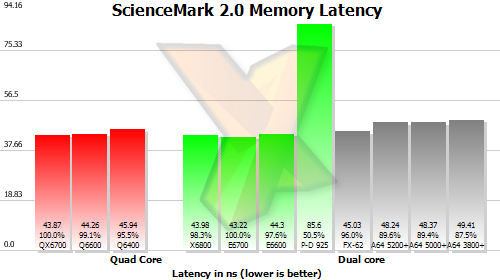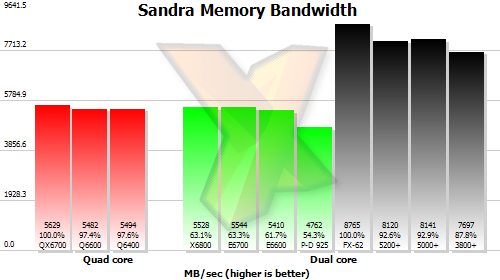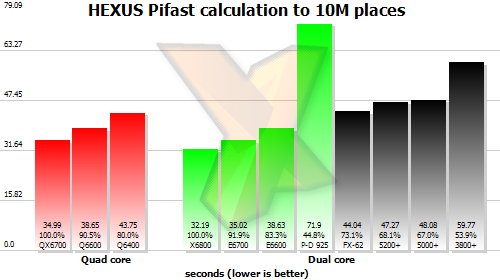Synthetic benchmarks

Both the Core 2 Duo and Core 2 Extreme QX6700 show a touch less memory latency in Sciencemark than the Athlon 64, even though it uses a discrete memory controller. The Pentium D is not equipped with the Core 2's latency-masking attributes and suffers in this test. It's rather like our own P.D., that is, a little old and a little slow ;). The Athlon 64 FX-62, with its 2.8GHz core speed, was the best of AMD’s bunch. Not surprisingly, the Core 2 Quad Q6400 was the slowest Intel CPU in this test, thanks to its lowly 2.13GHz clock.

The Core 2 Extreme QX6700 doesn’t have any significant improvement in terms of memory bandwidth over the Core 2 Duo, although it does perform better than the Pentium D 925, as the latter only offers a 800MHz FSB. The Athlon 64 clearly has the upper hand here, as we’ve come to expect from its on-die memory controller. But the question is whether that synthetic advantage actually has any real-world effect on performance.

Our Pifast test clearly isn’t optimised that well for quad-core. The Core 2 Extreme X6800 rules this test, with the QX6700 performing almost identically to the E6700, since they run at the same clock speed. Intel’s old Netburst architecture can’t compete at all, and not even AMD’s flagship Athlon 64 FX-62 can beat the Core 2. In fact, the Core 2 Quad Q6400 running at 2.13GHz is still marginally quicker.

Our cryptography test is similarly not optimised for quad-core, so the fastest individual core wins. Here, the Athlon 64 FX-62 is still a fine contender, with the Pentium D 925 again showing how far behind the Netburst architecture can be.
But these are all synthetic tests which only indicate the performance potential available. More important is how all the CPUs compare in real-world tasks.









